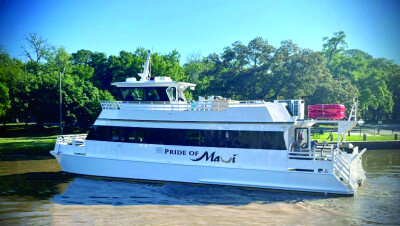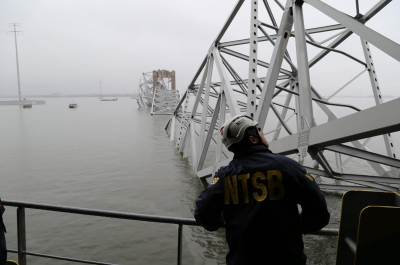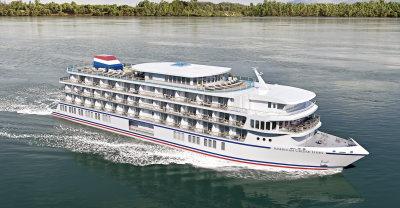The Coast Guard will limit vessel traffic in part of upper Chesapeake Bay when as many as 650 competitors dive in for the Great Chesapeake Bay Swim June 9.
The temporary regulated area Sunday spans a narrows on either side of the William P. Lane Jr. Memorial Bridges that carry Highway 50 across the bay. The area will extend 500 yard north and south of each span, from 11 a.m. to 5 p.m. as swimmers make their way from Sandy Point State Park northeast of Annapolis, Md., across 4.4 miles to Kent Island.
During that time, “only designated marine event participants and official patrol vessels are authorized to enter the regulated area,” according to a statement from Coast Guard officials in Baltimore. “The Coast Guard patrol commander or designated marine event patrol may forbid and control the movement of all vessels in the regulated area.”

Waterway restrictions for the Great Chesapeake Bay Swim event includes the entire span of the William P. Lane Jr. Memorial Bridges from shore to shore and approximately 500 yards north and south. Coast Guard image
Vessel operators hailed or signaled by those patrol vessels must comply with their directions, and failure to do so could bring a citation from the Coast Guard or other law enforcement. Mariners can contact the Coast Guard Sector Maryland-National Capital Region headquarters at (410) 576-2525, or use marine-band radio via VHF-FM channel 16.
The crossing is limited to 650 pre-registered swimmers to ensure safety in a highly organized event. Swimmers usually start in two waves 15 minutes apart – with the faster participants in the second wave – to help group swimmers as much as possible, so they can be monitored and aided if necessary by patrolling boaters and kayakers.
The crossing takes an average 2 hours and 25 minutes, and is not without its perils: cross currents and swells, the bay’s chop, stinging sea nettle jellyfish and potentially bashing into rocks around bridge supports and jetties.
The National Oceanic and Atmospheric Administration measures tidal, current and weather conditions prior to the event, comparing the results with predicted conditions to help organizers determine the optimum starting time for the event.
With that scientific advice, the GCBS has seen between 79% to 97% of starters finish the race in the last five years, according to organizers. They count 1991 and 1992 as the toughest years, when ”a strong ebb current of about 2 knots in the main channel beneath the 200’ high spans (one and a half miles from the start) precluded all but the strongest and most determined swimmers from finishing the event,” a completion rate of 15% to 19%.
The GCBS traces its history to a solo swim by Brian Joseph Early, then 21, who in June 1982 made the crossing Kent Island to Sandy Point in memory of his father Joseph Earley, who had died of diabetes complications the year before.
Two years later, race organizer Fletcher Hanks began a separate bay swim event which attracted 2 swimmers the first year and about 60 the second year. On June 15, 1986, the Hanks and Earley events merged when 211 swimmers successfully swam across, and in 1987 the event’s starting point was established at Sandy Point.





